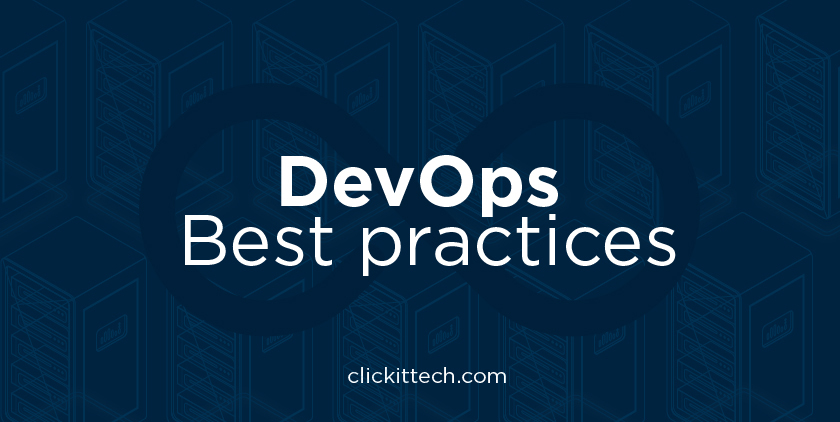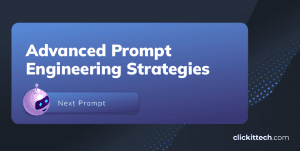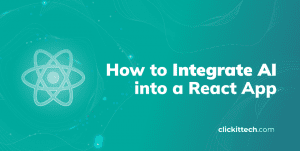In simple and short words, we can define DevOps as the methodology that consists of implementing cloud-based tools and the DevOps best practices that automate, optimize, and monitor the entire Software Development life cycle.
As a result, there are many DevOps advantages that will help you improve the communication, integration of components, and the final code release time of new features for end-users.
As with any methodology or framework, there are always practices that allow you to make things work better. For this reason, the purpose of this blog is to show you the best practices for DevOps that we have discovered through our experience and that, definitely, they are the most important and applicable for application modernization.
- DevOps best practices
- Container Orchestration
- Infrastructure as Code
- Continuous Integration/Continuous Delivery
- Serverless
- Conclusion
- FAQs
DevOps best practices
1. Container Orchestration
Container orchestration is the process of automating the management and coordination of containers-based microservice applications across multiple clusters. This means that it automates the scheduling, deployment, scalability, load balancing, availability, and networking of containers.
Thus, the primary focus of the Container orchestration process is to manage the container’s life cycle and their dynamic environments.
Apart from the features that we already introduced, there are many other benefits that you can enjoy while using Container Orchestration, such as:
1. Bring scalability and high availability
2. The feature of implement microservices-based architectures which provide better management for the apps
3. The ability to monitor each one of the services in a better way, having greater visibility and response capability to disasters
Luckily, there are some Container orchestration tools like Docker, Kubernetes, and Amazon ECS that allow the user to guide the complete life cycle of the containers, based on predetermined specifications.
I highly recommend this article about Kubernetes vs Amazon ECS that can help you to choose the best container orchestration for your needs.
When working with some of the Container orchestration tools mentioned before, you should be aware of following the best DevOps practices for better and efficient work. They include the following:
✔ You should always use a Container Orchestrator on your production environments. It will ease up the entire container management process by adding the necessary automation, and at the same time, it will ensure high scalability and availability for your live application.
✔ If you are using Kubernetes as your Container Orchestrator, you should always use Secrets for keeping your accesses safe, as well as Helm to reuse your manifests.
✔ Add monitoring and logging for your containers.
✔ Optimize the size of your Docker images as much as possible to speed up deployments.
✔ Prefer not using containers to store your workers, but if you have to, reduce the risk for downtime as much as possible, you will not want to lose valuable information or processes.
✔ Do not cache any content inside containers
✔ Do not allocate your database inside containers
✔ If you want to implement containers, then build your applications to be completely stateless
✔ When using a microservices approach, make good use of your resources (CPU, Memory, etc.) and assign them just as necessary for each service.
✔ Prefer the use of a dedicated VPC with its corresponding private subnets for ECS.
✔ Keep your ECS agent updated.
✔ When using ECS, use SSM to hide the important variables in task definitions. Restrict the access to SSM with IAM.
✔ Keep your container-based infrastructure on IaC templates as a Disaster Recovery Plan.
We highly recommend you select Kubernetes as your container orchestration service since it is more robust by offering better container availability and a better security layer. Apart from this, Kubernetes has the particularity of being able to run over different cloud providers.
Before getting into the next DevOps practice, let me recommend you the article DevOps vs Developer where you can find an extensive explanation about the DevOps methodology.

2. Infrastructure as Code
Infrastructure as Code (IaC) is a process that automates the provisioning of infrastructure, which enables the development, deployment, and scalability of cloud applications with higher speed, less risk, and lower cost.
Thanks to this process, there’s no need for developers to manually provision and manage servers, operating systems, database connections, storage, and other infrastructure elements.
In this manner, Infrastructure as Code helps to build reliable infrastructure and apps in two main ways:
1. It helps a lot to perform, manage, version, and test changes in the cloud infrastructure, allowing it to be more reliable.
2. It facilitates the provisioning process for cloud resources by automating it.
In the DevOps methodology, IaC is a very important process due to its capacity to create and version infrastructure in the same way they version source code. Hence the importance of keeping in mind the DevOps best practices that should be implemented:
✔ If you are using Terraform, you should make use of Modules so that you don’t repeat code and make the infrastructure maintenance easier.
✔ You should always use the latest version of all cloud resources.
✔ Make sure that your resources tagging follows best practices.
✔ Implement a GitOps pipeline for your Terraform or CloudFormation templates to make the code deployment process more reliable.
✔ Dedicate an exclusive repository for your Terraform templates.
✔ Avoid hardcoding on your IaC templates.
✔ Save and restrict the access to states in Terraform.
✔ Focus your work on making your templates as reusable as possible.
✔ Restrict the permissions on who can run your IaC templates.
✔ Implement syntax tests for your templates code.
✔ Implement Canary or Blue/Green deployments for your IaC templates to avoid downtime.
Technology recommendation:
We suggest you select Terraform for your IaC solutions since it is agentless, and therefore it simplifies its execution on your cloud environments.
In addition, Terraform supports Multi-Cloud and portability for different clouds like GCP, Azure, and AWS and it has a bigger community of contributors, which helps you find resources or solutions for your problems.
A further recommendation is to incorporate a team of DevOps for Financial Services; proficient DevOps developers will build scalable, reliable, secure, and futuristic DevOps applications for large-scale Fintech Enterprises.

3. Continuous Integration/Continuous Delivery
Continuous Integration (CI) and Continuous Delivery (CD) are the processes that allow the development team to deliver code changes more frequently and in a more reliable way.
Having a CI/CD pipeline for your code releases can help you in four different ways:
1. Automate the entire code-build-test-launch cycle and achieve faster code releases that will give your customers value.
2. Make the coding process easier and more coordinated for your developers, avoiding unnecessary mistakes and code overlaps.
3. Execute automatic code tests that will ensure your code integrity and compliance with the standards you have set.
4. Execute security validations for every code release you make and implement a DevSecOps cycle that will ensure your code is not vulnerable or has security breaches.
DevOps teams really employ CI/CD because it allows software development teams to focus on code quality and security since the deployment steps are already automated.
For this reason, it is essential to implement the DevOps best practices during all your processes. Some of them are:
✔ When you are using a CI/CD approach, you should make sure to have automated integration tests to ensure quality on each code release.
✔ Combine your CI/CD approach with Docker to optimize your code-releasing process.
✔ Integrate your CI/CD approach with any collaboration platform you prefer, such as Slack, to keep constant vision on the code releases, revisions, etc.
✔ Integrate a DevSecOps tool on your pipelines to find vulnerabilities in code and wrong dependencies on code.
✔ Use one single tool for your CI/CD approach, and do not try to mix several; you will only add unnecessary complexity and failures.
✔ Ensure that every step or job inside your CI/CD workflow takes from 1 to 2 minutes to complete, if they take more time, then your workflow will become slow and tedious for your team.
Regarding your deployments, try your best to get them last 5 minutes or less.
1. If possible, implement cache layers to help you decrease the build time for your apps.
2. Block the commits for a master environment, and enable access only via Pull/Merge request.
3. To process service credentials inside your CI/CD pipelines, opt using KMS encryption or the injection via environment variables.

Technology recommendation:
Choose using CircleCI since its easily adaptable with multiple cloud providers, and its free tier offers a very reasonable amount of jobs.
But if you are planning to have a large number of developers deploying multiple changes per day and working on a complex multi-branch approach on your code repositories, then you should prefer Jenkins. It is more robust and better for managing and having visibility on all the jobs, code releases, etc. made by your team and it enables the integration of many plugins that extend the capabilities for CI/CD.
If you want to go deeper into the DevOps world, here’s a complete article about the Top Benefits of DevOps for Fintech.

4. Serverless
Serverless is a cloud-native development model that allows developers to build and run applications and services without having to manage servers.
This process eliminates all the infrastructure management tasks such as cluster provisioning, patching, operating system maintenance and capacity provisioning. Developers just get in charge of packaging their code in containers for deployment.
Once deployed, serverless apps respond to demand and automatically run and scale as needed.
Using a Serverless approach (from a cloud infrastructure standing point and not coding) for your applications, brings many advantages, for example:
1. Services that integrate the serverless model are more cost-effective since you just have to pay for the exact execution time of functions and serverless resources.
2. It helps a lot to automate tasks such as the provisioning for your cloud resources or triggering the creation of new cloud resources, which is really useful for multi-tenant apps.
3. It allows you to remove some concerns from mind, such as networking or the application servers scalability since all the serverless functions are processed, managed and scaled transparently by the cloud provider.
The DevOps best practices that you should consider for Serverless are:
✔ You should prefer the use of the Serverless Framework to make the code update process easier and cleaner.
✔ When using Fargate, if you have tasks that require access to the internet, include them into a public subnet to decrease your costs.
✔ Keep constant monitoring on the CPU and memory that you use in Fargate so that you can adjust them accordingly and save costs.
✔ Integrate AWS Step Functions to manage the error handling, retry and workflow process across several serverless functions.
Technology recommendation:
If you want to facilitate the entire cloud provisioning process, build full serverless API’s based on AWS Lambda for your multi-tenant applications. This will allow your developers or yourself to perform this process with just a few clicks, without the need to have a specialized infrastructure person making the changes on provisioning in Terraform, Ansible or Docker.
In case you’re looking to build a Laravel app, I suggest you to read about the Best Practices for Your SaaS Laravel Application on AWS that will help you to perfom a successful work.
Now that we already review the best practices in DevOps, I just want to remind you that there are also many DevOps tools that you can use to automate your process while you implement these DevOps best practices.
Also read: DevOps Trends Shaping the Industry Now and Beyond.
Conclusion
After reading all the previous DevOps best practices, we are sure that you have identified several of them as applicable for your apps, and perhaps others that bring you the interest to experiment. We encourage you to do so since we know that you will discover they are useful for optimizing your cloud operations.
If you’re looking for consultancy on how to implement these recommendations, you can contact us, and we will be glad to help you get to the next level on your DevOps path.
Up for an interesting debate? Read our full blog: DevOps engineer vs Software engineer

FAQs
-Container Orchestration: It manages the container’s life cycle and dynamic environments.
-Infrastructure as Code: Enables the development, deployment, and scalability of cloud applications with higher speed and less risk
-Continuous Integration/Continuous Delivery: This allows the development team to deliver code changes more frequently and more reliable.
-Serverless: This eliminates all the infrastructure management tasks such as cluster provisioning, patching, operating system maintenance, and capacity provisioning.
We can say that DevOps is a methodology that integrates development and operations teams that automate, optimize, and monitor the entire Software Development life cycle and brings a culture change across the organization.
Docker being part of the Toolset for DevOps Infrastructure Automation, is the most popular containerization solution available in the market. It offers a robust and comprehensive containerization ecosystem that lets you efficiently manage the entire application deployment lifecycle. So when we talk about DevOps tools for automation, Docker should always be an automatic inclusion.








